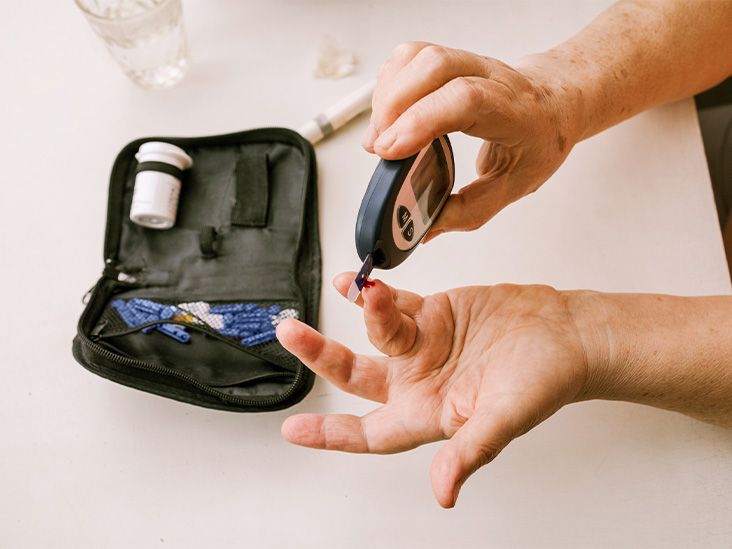Abnormal uterine bleeding (AUB) involves uterine bleeding that does not stem from a regular period or that comes excessively or erratically outside of the menstruation period. Different types include acute or chronic AUB.
Abnormal uterine bleeding can refer to changes in the flow, regularity, or duration of bleeding. Symptoms include spotting or bleeding in between periods and are usually not a cause for concern unless they relate to an underlying medical condition. A doctor can rule out various causes to diagnose the source of the issue.
A note about sex and gender
Sex and gender exist on spectrums. This article will use the terms “male,” “female,” or both to refer to sex assigned at birth. Learn more.

AUB can stem from various reasons. Research indicates that around
Symptoms of AUB include:
- bleeding in between periods
- severe or heavy bleeding during periods, including soaking through tampons or pads
- bleeding after intercourse
- bleeding for longer than a week after periods
- irregular periods, which are shorter than 21 days or longer than 35 days
- bleeding after menopause
- dizziness or weakness
- fainting
- hypotension or low blood pressure
The International Federation of Obstetrics and Gynecology discarded older terms such as oligomenorrhea, menorrhagia, and dysfunctional uterine bleeding in 2018, instead using simple terms such as acute versus chronic.
Oligomenorrhea refers to irregular or infrequent periods, and menorrhagia involves heavy menstrual bleeding.
Learn more about uterine bleeding.
Acute AUB refers to excessive bleeding and requires immediate intervention to prevent further blood loss. It
When to contact a doctor
If a person is changing pads or tampons more than every 2 hours due to excessive bleeding, they need to contact a healthcare professional. They need to seek immediate medical care if symptoms also include:
- dizziness
- fainting
- chest pain
- shortness of breath
Causes
Causes for AUB may include:
- Ovulation issues: Ovulation issues can include a lack of ovulation, which results in the lining of the uterus growing thicker. Symptoms may include heavy, irregular bleeding. Conditions such as polycystic ovary syndrome (PCOS) and hypothyroidism can cause ovulation issues.
- Adenomyosis: Adenomyosis is where the uterine lining grows into the muscular walls of the uterus, causing symptoms such as pain and heavy bleeding.
- Polyps: Polyps are growths that can occur on the cervix. They are noncancerous but can result in irregular bleeding.
- Fibroids: Fibroids are tumors that develop in the walls of the uterus and can cause irregular bleeding.
- Coagulopathy, or bleeding disorders: Coagulopathy is an umbrella term for conditions involving issues with blood clotting.
- Medications: Medications such as blood thinners or aspirin may cause irregular bleeding.
- Birth control: Birth control such as intrauterine devices (IUDs) and hormonal birth control may cause bleeding at other times besides when during a period.
- Endometriosis: Endometriosis is a condition where endometrial tissue grows outside the uterus. It can lead to irregular bleeding and pain.
- Endometrial cancer: Acute AUB may be a sign of endometrial cancer, which starts in the cells of the womb’s lining.
- Ectopic pregnancy: Ectopic pregnancy occurs when an embryo grows outside the womb lining. It is a medical emergency, and symptoms include bleeding.
- Miscarriage: A miscarriage is the loss of an embryo, with the main sign being vaginal bleeding or spotting.
- Pelvic inflammatory disease (PID): PID symptoms usually include irregular periods or spotting.
A helpful acronym for the causes of AUB is PALM-COEIN:
- P: polyp
- A: adenomyosis
- L: leiomyoma, which is a type of fibroid
- M: malignancy
- C: coagulopathy
- O: ovulatory dysfunction
- E: endometrial disorders
- I: iatrogenic, which is the causes of a disease
- N: not otherwise classified, meaning it does not fit the above criteria
Treatment
Treating acute AUB usually involves determining the cause of the bleeding. Interventions can also depend on other factors, such as whether a person still desires to become pregnant, their age, and any underlying medical conditions.
Some treatments
- hormonal methods such as the combined oral contraceptive pill
- uterine tamponade, which uses pressure to control uterine bleeding
- medications such as desmopressin if AUB occurs due to von Willebrand disease
- surgery to remove polyps and fibroids
- lifestyle modifications such as diet and exercise, particularly for those with PCOS
- hysterectomy
Chronic AUB has the same symptoms as acute but occurs over a longer time. Symptoms may also include:
- bleeding after sexual intercourse
- periods that are longer than 35 days or shorter than 21 days
- no periods for longer than 3 months
Again, treatments depend on the cause. A doctor may also prescribe iron tablets for those experiencing chronic AUB and anemia.
The difference between acute and chronic AUB is chronic occurs for at least 6 months, whereas acute may develop suddenly and infrequently.
Medications that can help with atypical bleeding include:
- hormonal birth control, such as pills, the patch, the vaginal ring, or interventions with progestin only, such as IUD and the injection
- hormone therapy, particularly for perimenopausal individuals
- gonadotropin-releasing hormone (GnRH) agonists, which can temporarily reduce the size of fibroids
- tranexamic acid
- nonsteroidal anti-inflammatory drugs (NSAIDs), such as ibuprofen, can also help with pain and cramps
- antibiotics for infections
Types of abnormal uterine bleeding (AUB) include acute and chronic. Both have the same symptoms, except chronic may occur over a long period.
Treatment depends on the cause and the individual factors of the person experiencing the bleeding. If bleeding occurs frequently or spontaneously, an individual needs to contact a healthcare professional.


